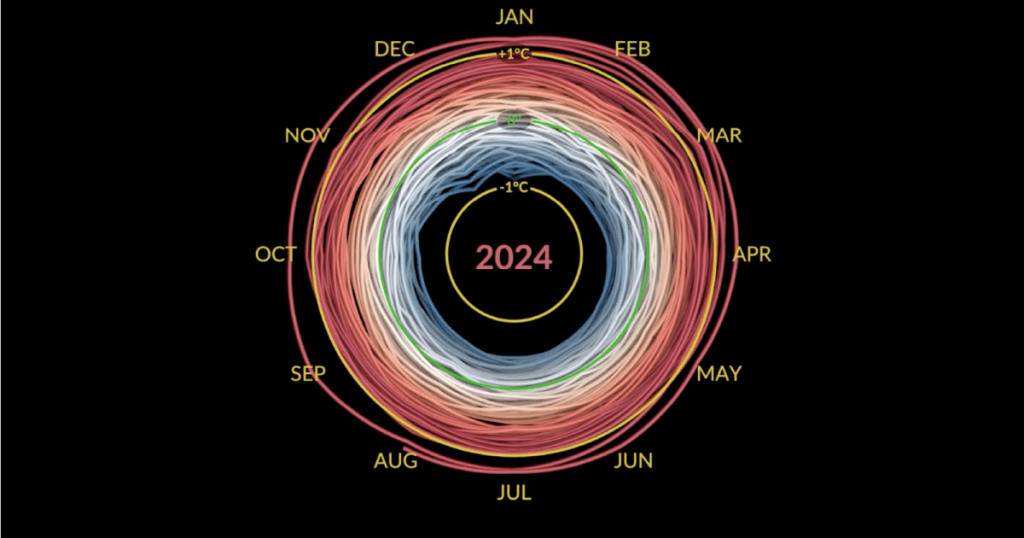By June 30, the storm had intensified further into a Category 5 hurricane with sustained winds of 185mph (298km/h), making it the earliest Category 5 hurricane on record in the Atlantic basin. Beryl made landfall in the early hours of July 1, hitting the coast of Florida, causing widespread devastation and loss of life.
The rapid intensification and unprecedented strength of Hurricane Beryl were attributed to the abnormally warm sea surface temperatures in the Atlantic, which provided the storm with the energy it needed to grow stronger and more destructive.
AUGUST
In August, the world witnessed record-breaking heatwaves, wildfires, and droughts, with some regions experiencing temperatures well above 50˚C (122˚F).
The Arctic Circle experienced temperatures that were more than 10˚C (18˚F) above the seasonal average, leading to widespread melting of glaciers and permafrost.
Wildfires raged across Siberia, Alaska, and Canada, releasing massive amounts of carbon dioxide and other greenhouse gases into the atmosphere, further exacerbating global warming.
Meanwhile, droughts in Africa and India led to water shortages, crop failures, and food insecurity for millions of people, highlighting the disproportionate impact of climate change on vulnerable populations.
NOVEMBER
As the year progressed, the impacts of climate change continued to escalate, with unprecedented storms, floods, and heatwaves becoming more frequent and severe.
In November, Super Typhoon Yolanda made landfall in the Philippines, breaking records as the strongest typhoon to ever hit the country.
With sustained winds of 195mph (313km/h) and gusts of up to 235mph (378km/h), Yolanda caused widespread destruction, leaving thousands dead and countless others displaced.
The extreme intensity of the typhoon was attributed to the warmer sea surface temperatures in the Western Pacific, which provided the storm with the energy it needed to intensify rapidly and become a super typhoon.
DECEMBER
As the year drew to a close, scientists and climate experts warned that urgent action was needed to address the escalating climate crisis.
With 2024 on track to become the hottest year on record, surpassing the previous record set in 2023, the importance of meeting the goals of the Paris Agreement became more critical than ever.
Countries around the world were urged to step up their efforts to reduce greenhouse gas emissions, transition to renewable energy sources, and adapt to the impacts of climate change.
As the world faced the consequences of a rapidly warming planet, the need for collective action and international cooperation to combat climate change was underscored, with the stakes higher than ever before.















